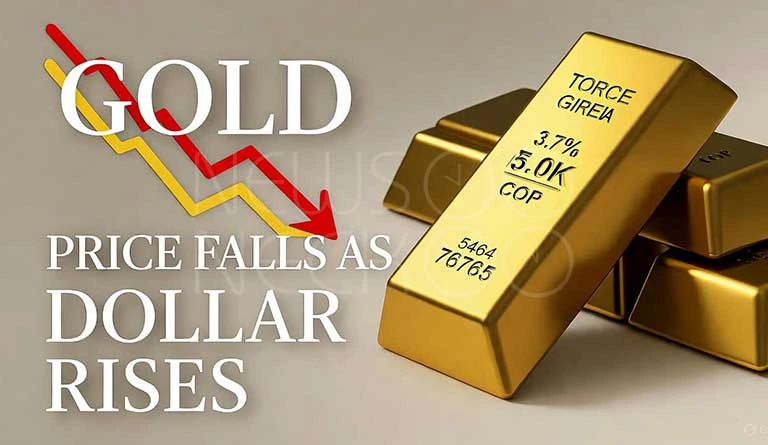Is the Gold Rush Over? Why the Yellow Metal’s Stunning Rally Just Hit a Wall
It has been a thrilling ride. For months, the price of gold has done almost nothing but go up. It broke records, smashed through ceilings, and left investors cheering. It seemed like nothing could stop its powerful bull run.
But this week, something changed.
The music suddenly stopped. The unstoppable rally has hit a wall. The price of gold is falling, and falling fast. This sharp drop has left many investors asking one nervous question: Is the party over?
After touching a breathtaking all-time high, gold is now in what market experts call a “correction.” In simple terms, its price has dropped significantly from its recent peak. In just a short time, it has shed about 5% of its value.
For anyone who bought gold at the top, this is a painful moment. For everyone else, it is a moment of confusion. What is happening to the world’s favorite safe-haven asset?
The Engine of the Rally: Why Gold Was So Hot
To understand why gold is falling, we first need to know why it was rising so fast. The recent gold rush was driven by a few key factors.
First, there was the hope of lower interest rates. When the cost of borrowing money is high, gold becomes less attractive. Why? Because gold does not pay you any interest. If you can put your money in a savings account and earn 5%, why would you buy a metal that just sits there?
For a long time, the market believed the U.S. Federal Reserve was about to cut interest rates. That belief was rocket fuel for gold. If rates were going down, the logic went, then gold would become more appealing.
Second, gold is a classic “safe haven.” When people are worried about war, inflation, or economic trouble, they buy gold. They see it as a real, solid thing that will hold its value when paper money or stocks might not. With conflicts in Ukraine and the Middle East, and ongoing economic worries, many people were seeking safety in gold.
Finally, central banks around the world, especially in countries like China, were buying enormous amounts of gold. They were not just betting on the price; they were diversifying their country’s savings away from the U.S. dollar. This created a huge, steady demand that pushed prices higher.
You might Like it: Crypto Market Rebounds After $19B Crash Shock:
So, What Changed? The Cold Water of Reality
The problem with markets is that they run on stories. And when the story changes, the price changes.
The most important factor in gold’s recent fall is a shift in the story about interest rates. New economic data from the U.S. has been surprisingly strong. Inflation is proving to be stickier than anyone hoped. The job market is still robust.
This strong data has forced investors to face a hard truth. The Federal Reserve may not be cutting interest rates anytime soon. In fact, some investors now think the Fed might even keep rates high for the rest of the year.
This is bad news for gold. If you can still get a good, safe return from a bond or a savings account, the pressure to buy gold disappears. The “lower rates” story that powered the rally is now in doubt.
At the same time, the massive wave of buying from speculators and central banks may have slowed down. After such a huge run-up, it is natural for some investors to decide it is time to cash in their profits. This creates a wave of selling that pushes the price down further.
A Pause, or the End of the Run?
So, is this the end of the gold bull market? Or is this just a temporary pit stop?
Market experts are divided. The “bears” those who think the price will keep falling say the new interest rate reality is a game-changer. They believe that without the promise of rate cuts, gold has no reason to keep climbing. The correction, they warn, could have further to go.
But the “bulls” those who are still optimistic see this drop as a buying opportunity. They argue that the long-term reasons to own gold have not disappeared.
Inflation has not been defeated. Geopolitical tensions are not going away. And central banks are still likely to keep buying gold to move away from the U.S. dollar. They believe this is just a short-term stumble in a much longer race.
For the average person watching their investments, the message is clear. The gold market is reminding everyone of a fundamental rule: what goes up must sometimes come down. No market moves in a upward line forever. The recent turbulence is a classic shake-out, a moment where weak hands sell and strong hands decide their next move.
The future of gold now depends on the next chapter of the economic story. Will inflation cool down, allowing the Fed to cut rates? Or will a strong economy keep rates high? The answer will determine whether gold’s glitter returns, or fades away.
Must Read : Baba Vanga Predictions Meets Donald Trump Policies
Author: Yasir Khan
Date: 22 Oct, 2025
For More Updates, Visit Newsneck













